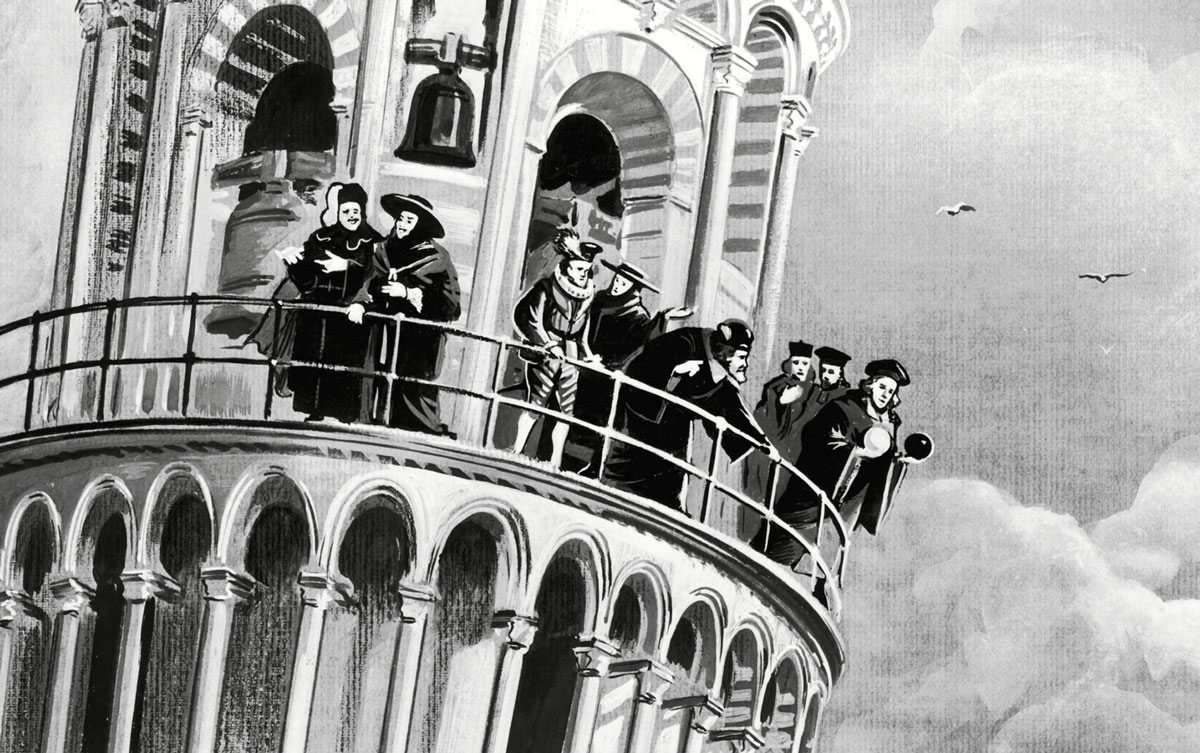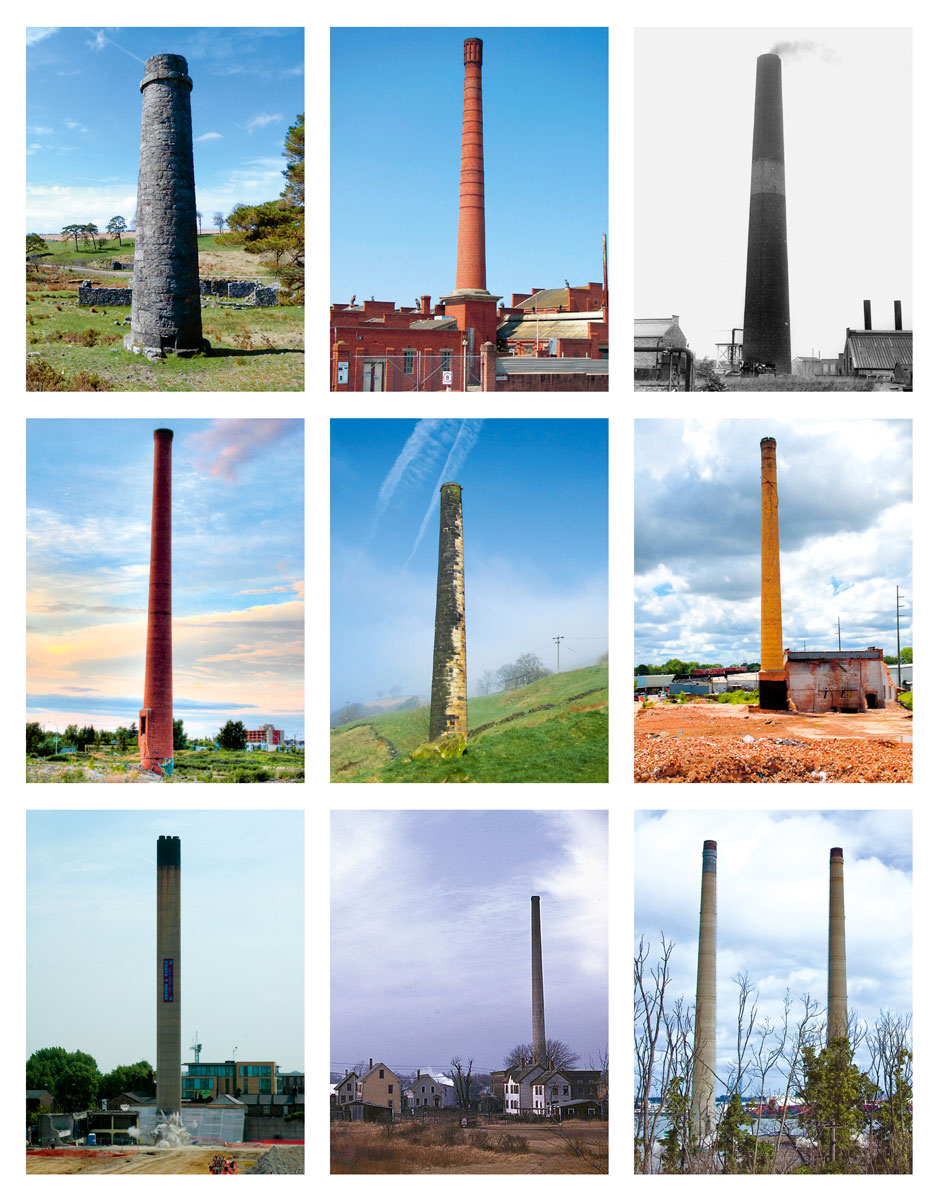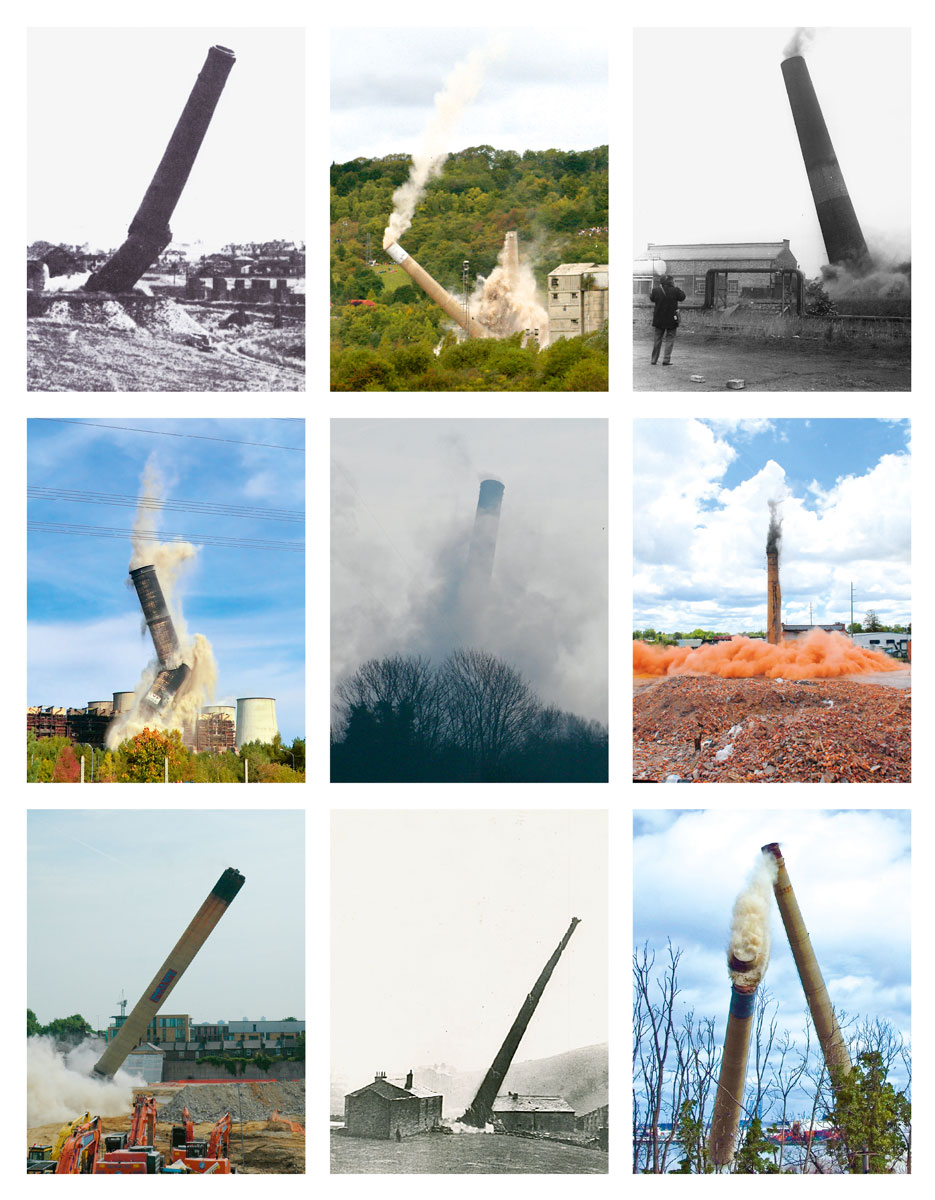A Decent Interval
How long does a building stand before it falls?
Greg Siegel
How long does a building stand before it falls?
How long does a contract last? How long will brothers share the inheritance before they quarrel?
How long does hatred, for that matter, last?
Time after time the river has risen and flooded.
The insect leaves the cocoon to live but a minute.
How long is the eye able to look at the sun?
From the very beginning nothing at all has lasted.
—Gilgamesh[1]

So goes the story. Most historians of science today doubt that this episode actually happened.[2] Galileo’s own writings, his notebooks and correspondence included, make nary a mention of it. The only real evidence in the historical record comes from Vincenzio Viviani, the master’s pupil and disciple, who cursorily recounted the tale in his biography of Galileo, which was not written until 1654 and was not published until 1717. Yet, even now, that tale continues to be told in one version or another, whether as fact or as explanatory fiction, in a wide variety of educational and popular forums. If the Leaning Tower of Pisa Experiment is indeed apocryphal, its legend nevertheless remains inextinguishable, its allure undeniable, its mythic resonance irrepressible. For, in the parable of the heretically empirical mathematician and his physically impossible spheres, modern science’s allegedly decisive break with Aristotelian dogma—a defining “epistemological rupture,” as Gaston Bachelard would have it—finds perhaps its most condensed and compelling expression, the perfect pregnant moment.
How curious, then, that this moment of supreme scientific rectitude, of manifest epistemic rightness and correctness, in which reason and nature finally came into proper alignment, should seem to have been destined to take place atop such a deviant structure, against such a crooked backdrop. What a strange accident of history or of mythology that the Tuscan city’s infamous engineering failure—its accidentally inclined bell tower, built on church grounds and so, presumably, under divine auspices (the eyes of holy infallibility)—served as the stage for this famous achievement of early experimental science, as the platform for this faultless performance of epoch-making truth.
Galileo may have succeeded, on that fateful day at the Pisan campanile, in forever closing a certain postulated interval. But the question concerning a different interval, one that likewise pertained to the nature of falling bodies as a function of time, remained disconcertingly open. When will the Leaning Tower collapse? No one in those days, no artist or architect, no physicist or philosopher, not even Galileo, knew with any degree of certainty how long the building could stand up, how long its tilted frame could withstand the planet’s tremendous, relentless pull. Longer than brotherly love lasts? Longer than the floodwaters linger? Longer than the silkworm lives? Longer than a man can look at the sun? No one knew exactly when the accident of gravity would come (the grave accident, the serious accident, the heavy accident, but also the gravid accident: another pregnant moment).[3]

In 1929, the same year Cocteau was busily working on The Blood of a Poet, another key figure in the French avant-garde, Georges Bataille, contributed a short essay—titled “Factory Chimney”—to the sixth issue of Documents, the dissident surrealist journal he cofounded and edited. In the piece, which appeared in the journal’s audacious “Dictionary” section, Bataille recalls the terror and anguish with which he, as a child, beheld the towering chimneys of France’s “textile and dye factories”: the grotesque way “those giant scarecrows” stuck out of “the muddy, stinking earth”; the savage way those “oracle[s] of all that is most violent in our present-day world” belched “black smoke” at “the ominously dull, threatening sky”; the obscene way “those gods of a sewer Olympus” excreted “piles of slag and dross.”[7] For Bataille, the historical disappearance of such an “untutored way of seeing”—even when, as here, that way of seeing was frightening and bewildering (indeed, perhaps especially then)—was to be lamented rather than celebrated, accounted a loss rather than a riddance.[8] Just as rational adulthood denies the subject access to the prerational immediacy of childhood impressions, so, Bataille suggests, modern science and economics have, through their blinkered logics, all but annihilated those modes of apprehending and experiencing that are inconducive or irreducible to abstract methods of reckoning and appraising. Hence, they who, with “knowing vision,” see in the factory chimney a pure instrument of industrial technical efficiency (“a stone construction forming a pipe for the evacuation of smoke high into the air”) are “necessarily blind” to that “fear-inspiring architectural form[’s]” more fundamental revelations.[9]
In keeping with his radical critique of rational utility, and with Documents’ provocative, occasionally assaultive use of images in general, Bataille chose a photograph to accompany his essay that, while not exactly contradicting the written text, did more than simply illustrate it. In effect, it scandalized it. It cut into it and under it. It mirrored it and, at the same time, infinitely exceeded it. Nowhere in “Factory Chimney” does Bataille imply that the monstrous structures he so vividly remembers might ever fail to stand erect, that they might ever, having succumbed to gravity, meet a grave end. Nowhere does he intimate that they could or would someday keel over, break down, come undone. On the contrary, Bataille describes those stone colossuses such that they seem permanent and indestructible, firmly fixed in place, eternal in their vertical monumentality. Nevertheless—nevertheless!—the photo: a gigantic factory chimney, leaning, collapsing. A fractured, falling smokestack, frozen in diagonal suspension. A sort of crooked candle being mysteriously blown out. A tall, slender tombstone, broken and disastrously off-balance.
European writers and artists were not the only ones during the interwar years to be drawn to the image—particularly the photographic image—of the leaning, collapsing smokestack. “The falling of a large tall chimney is a very spectacular and interesting sight,” observed Francis Bundy in the Journal of Applied Physics, in 1940. “There is usually much speculation as to where the chimney should break as it falls.”[10] By the mid-1930s, falling chimneys had become a topic of theoretical interest and debate among physicists in the United States.[11] In his detailed article, Bundy used smokestack-demolition photos, culled from the pages of American and British newspapers, to demonstrate that chimneys tended to rupture in one or more places as they collapsed, and that such ruptural accidents, in turn, caused different parts of the chimney to fall at different angles and velocities. Following Bundy, the question of how to analyze and calculate, and thereby scientifically account for, a falling chimney’s peculiar and complex mechanics (its various stresses, motions, tensions, accelerations—above all, its ruptures, its breaking points) continued to be discussed and photographically depicted in physics journals and textbooks for decades.[12] Whereas Galileo in the sixteenth century had been concerned to explain why different free-falling bodies hit the ground at the same time, scientists in the twentieth were concerned to explain why the same free-falling body hit the ground at different times. The ever-devious accident of gravity: sometimes it seems to crush a presumed temporal interval into nothingness; sometimes it presumes to create a temporal interval as though out of nothing.
And sometimes it makes that interval the mechanism of a sleepless dream. Cocteau, Bataille, and Bundy undoubtedly had quite different, even opposite, reasons for appropriating the photographic image of the falling factory chimney. Apparently, though, something about that image possessed the power to captivate the mind and, like the Gilgameshian sun, to fascinate the eye of both the modern artist and the modern scientist (to say nothing of their audiences). To be sure, something about that image generally struck, and still generally strikes today, with the force of a waking nightmare.

Images of falling—including of falling chimneys, regardless of whether they fall by design or by chance—are always, in a sense, figurations of accidents (in Latin: accidēns, from accidere, from cadĕre, meaning “to fall”). Moreover, and by the same token, images of accidental things, of fallen things, are always figurations of dead or deathly things, of corpselike things, of cadaverous things (in Latin: cadāver, from cadĕre, meaning “to fall”). This nexus—fall/accident/cadaver; fallen/accidental/cadaverous; falling/accidenting/cadavering—far from being merely etymological, defines the terms of a potent and enduring moral vocabulary and metaphysical iconography. In fact, it forms the nucleus of a whole cosmology. The Fall: the accident, the lapse, the original error that precipitated evil, engenders death, condemned man to mortality, produces corpses. The Fall: the primordial accident that happened in an instant and happened over an interval (accidere also means “to happen,” so an accident is both a fall and a befalling). As Paul Ricoeur notes, the Adamic myth “obeys a twofold rhythm”:
On the one hand, it tends to concentrate all the evil of history in a single man, in a single act—in short, in a unique event. … On the other hand, the myth spreads out the event in a “drama,” which takes time, introduces a succession of incidents, and brings several characters into the action.[13]
Cocteau insisted that the bifurcated falling-chimney sequence that brackets The Blood of a Poet’s dramatic action imparts to that action a dreamlike immediacy. It does so, to borrow Ricoeur’s words, by conflating “a succession of incidents” (the extended time of the film’s drama: an interval) with “a single act” (the compressed time of the smokestack’s destruction: an instant, here split in two). The emphasis in Cocteau’s formulation, then, is on what the instant does to the interval, how a destructive fall affects the perception and interpretation of a dramatic befalling. But what if we were to turn this emphasis on its head? What if we were to consider, as Cocteau does not, what the befalling does to the fall, what the succession of incidents imparts to the single act? Or how the temporally extended story affects the perception and interpretation of the temporally compressed sequence that encloses it? Would we not soon and inescapably come to the conclusion that under such conditions the image of the instant of mid-destruction—the pregnant moment of photographic decision, the incision that divides the chimney’s leaning and collapsing into a beginning and an ending, the rupture, the breaking point, the cut—“marvelously” discloses the interval of an entire accidental drama?
Ernst Bloch marveled at the camera’s uncanny ability to capture just such an interval in “Sledding at Eye Level,” a short, undated meditation, probably composed in the 1920s or 1930s. “A frightful picture took shape, one that breaks apart into two completely different sections,” writes Bloch, referring to a sensational newspaper photograph of a bobsled-race accident. “A living picture; soon it will live no more.”[14] The photo catches the speeding bobsled precisely as it begins to veer uncontrollably off course, to slip disastrously sideways, at once flying animatedly into air and falling cadaverously to earth.
One sees the sled with its front runner already passing over the barrier, one meter away from the spectators at eye level and heading straight toward them. ... Incomparably, one-twentieth of a second before the catastrophe, the camera has captured these soon-to-be-victims in all their obliviousness. ... A deadly second has been removed from time and affixed on a photographic plate. And the eyes of the spectators still are like the eyes of those who view this photograph: so secure and so vulnerable, blind to the passage of time, unconscious of what course the next moment might take. No habit or routine, the means by which we ordinarily colonize the future, could have come to the rescue here, nor any calculation tying the next moment down to laws and regulating its limitations: this accident brought to light the crooked shape of time.[15]
“The entire physical world is most properly regarded as a great energy system,” writes the acclaimed materials scientist James Edward Gordon in his book, Structures: Or Why Things Don’t Fall Down, first published in 1978.
That which is energetically advantageous is that which will sooner or later happen. In one sense a structure is a device which exists in order to delay some event which is energetically favoured. It is energetically advantageous, for instance, for a weight to fall to the ground, for strain energy to be released—and so on. Sooner or later the weight will fall to the ground and the strain energy will be released; but it is the business of a structure to delay such events for a season, for a lifetime or for thousands of years. All structures will be broken or destroyed in the end—just as all people will die in the end. It is the purpose of medicine and engineering to postpone these occurrences for a decent interval. The question is: what is to be regarded as a “decent interval”?[17]
That is the question. The fear that the Leaning Tower would sooner rather than later come tumbling energetically down intensified during the twentieth century, as new scientific measurements pointed to “the progressive increase in [its] rate of inclination and the risk of sudden structural collapse due to the fragility of [its] masonry.”[18] In 1990, the tower was closed to the sightseeing public, and for the next eleven years an international team of structural and geotechnical engineers labored to stabilize the building’s foundation so as to lengthen its lifespan, its period of vitality. According to the stabilization project’s lead engineers, that vital period has now, through extraordinary feats of calculation and technique, been extended by no fewer than two hundred years.[19] The gravid accident that terminates every decent interval has, in the case of the Pisan campanile, been positively delayed, triumphantly postponed, happily deferred until at least the twenty-third century.
Or so they speculate. Because even these perfectly modern engineers, with all their rectitudinous science, all their undeviating knowledge, cannot be absolutely certain “how the Tower will behave in the future.”[20] Roughly four centuries after Galileo, roughly four millennia after Gilgamesh, here arises the same straightforward question: How long does a building stand before it falls? And here, too, the same oblique admission: “An unequivocal answer is not possible.”[21]
- Gilgamesh: A New Rendering in English Verse, trans. David Ferry (New York: Farrar, Straus and Giroux, 1992), p. 64.
- See Lane Cooper, Aristotle, Galileo, and the Tower of Pisa (Ithaca, NY: Cornell University Press, 1935); Ernest A. Moody, “Galileo and Avempace: The Dynamics of the Leaning Tower Experiment,” in his Studies in Medieval Philosophy, Science, and Logic: Collected Papers 1933–1969 (Berkeley: University of California Press, 1975), pp. 203–286; and Michael Segre, “Galileo, Viviani and the Tower of Pisa,” Studies in History and Philosophy of Science, vol. 20, no. 4 (December 1989), pp. 435–451.
- Gaston Bachelard, The Formation of the Scientific Mind: A Contribution to a Psychoanalysis of Objective Knowledge, trans. Mary McAllester Jones (Manchester: Clinamen Press, 2002).
- Jean Cocteau, The Blood of a Poet, trans. Lily Pons (New York: Bodley Press, 1949), p. 8.
- Jean Cocteau, Professional Secrets: An Autobiography of Jean Cocteau, ed. Robert Phelps, trans. Richard Howard (New York: Farrar, Straus and Giroux, 1970), p. 147 (note).
- Jean Cocteau, The Difficulty of Being, trans. Elizabeth Sprigge (New York: Coward–McCann, 1967), p. 48.
- Georges Bataille, “Factory Chimney,” trans. Annette Michelson, in Encyclopaedia Acephalica (London: Atlas Press, 1995), p. 51.
- Ibid.
- Ibid.
- Francis P. Bundy, “Stresses in Freely Falling Chimneys and Columns,” Journal of Applied Physics, vol. 11, no. 2 (February 1940), pp. 112–123.
- See Richard M. Sutton, “Concerning Falling Chimneys,” Science, vol. 84, no. 2176 (11 September 1936), pp. 246–247; and Joseph B. Reynolds, “Falling Chimneys,” Science, vol. 87, no. 2252 (25 February 1938), pp. 186–188.
- See Arthur Taber Jones, “The Falling Chimney,” American Journal of Physics, vol. 14, no. 4 (July 1946), p. 275; Albert A. Bartlett, “More on the Falling Chimney,” The Physics Teacher, vol. 14 (September 1976), pp. 351–353; Ernest L. Madsen, “Theory of the Chimney Breaking while Falling,” American Journal of Physics, vol. 45, no. 2 (February 1977), pp. 182–184; and Jearl Walker, “The Amateur Scientist,” Scientific American (February 1979), pp. 158–162.
- Paul Ricoeur, The Symbolism of Evil, trans. Emerson Buchanan (Boston: Beacon Press, 1969), p. 243.
- Ernst Bloch, Literary Essays, trans. Andrew Joron, et al. (Stanford: Stanford University Press, 1998), p. 191.
- Ibid.
- See John B. Burland, Michele B. Jamiolkowski, and Carlo Viggiani, “Leaning Tower of Pisa: Behaviour after Stabilization Operations,” International Journal of Geoengineering Case Histories, vol. 1, no. 3 (July 2009), pp. 156–169. See also, by the same authors, “Stabilising the Leaning Tower of Pisa,” Bulletin of Engineering Geology and the Environment, vol. 57, no. 1 (June 1998), pp. 91–99.
- J. E. Gordon, Structures: Or Why Things Don’t Fall Down (New York: Da Capo Press, 2003), p. 324.
- Burland, et al., “Leaning Tower of Pisa: Behaviour after Stabilization Operations,” p. 157.
- Ibid., p. 167.
- Ibid.
- Ibid.
Greg Siegel is associate professor of film and media studies at the University of California, Santa Barbara. He is author of Forensic Media: Reconstructing Accidents in Accelerated Modernity (Duke University Press, 2014). His current work concerns the history and culture of emergency communications.